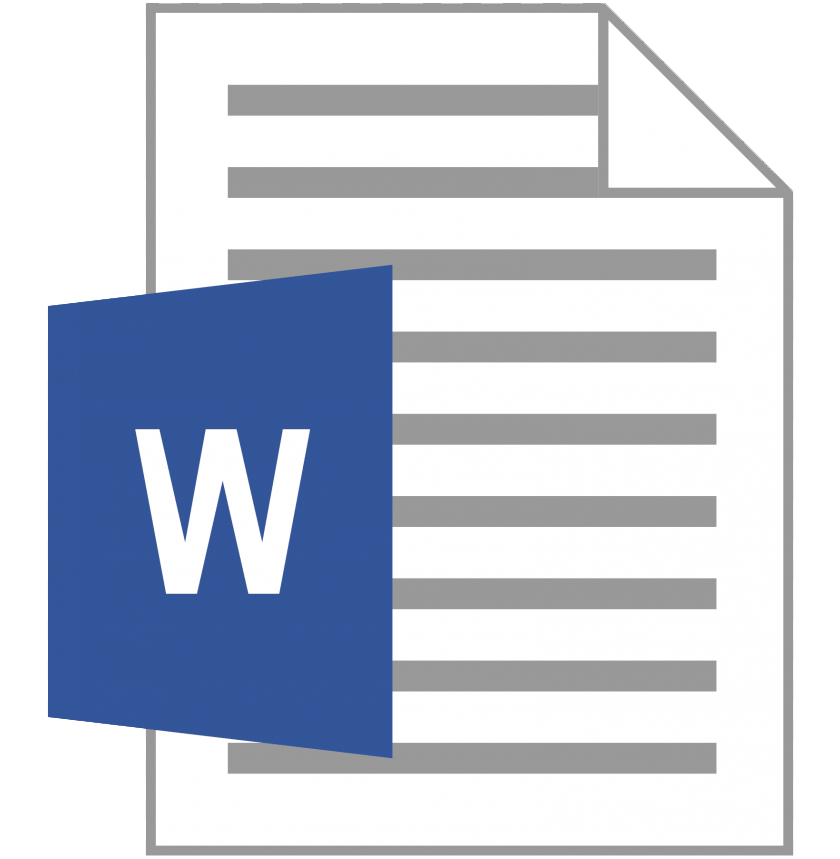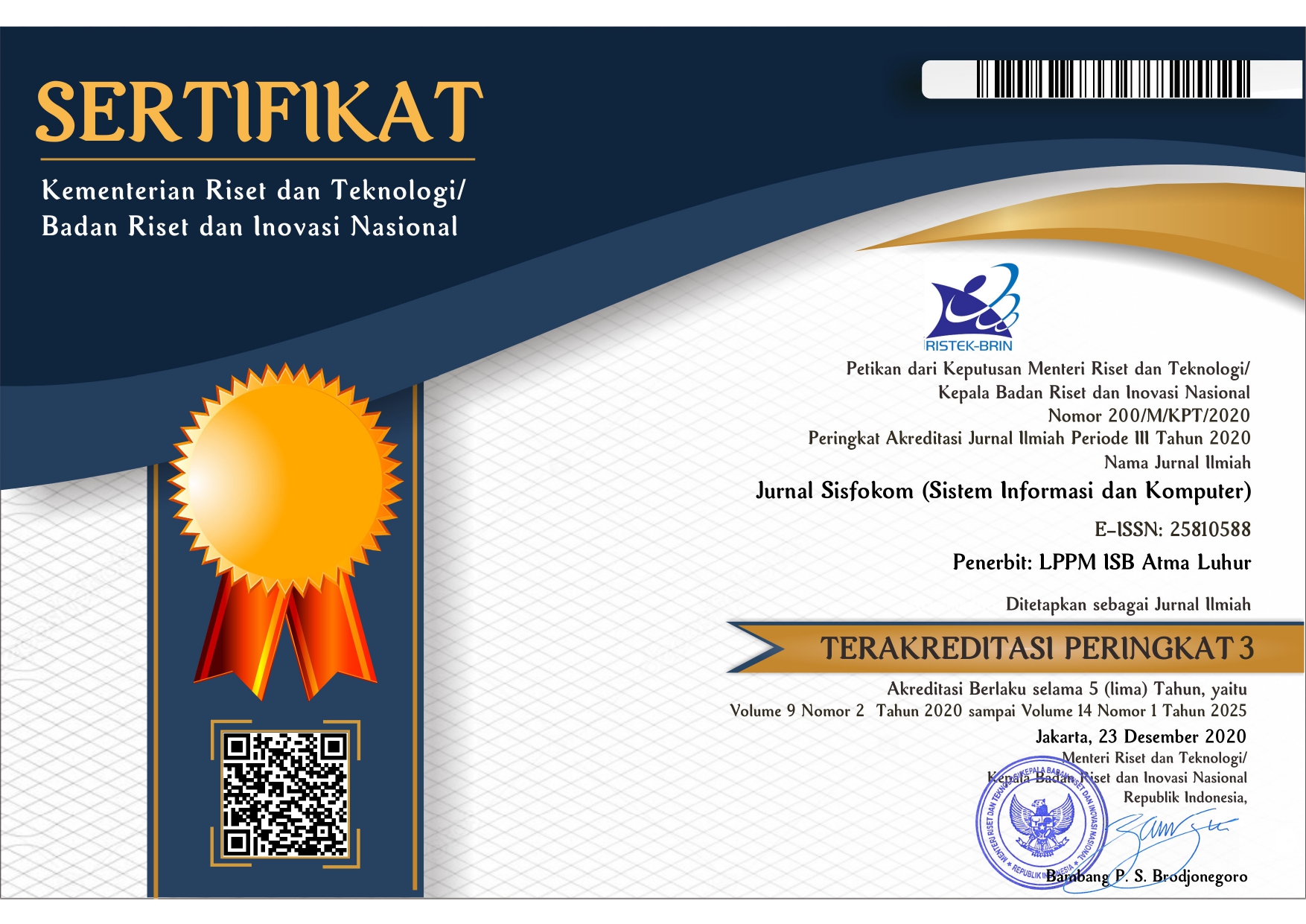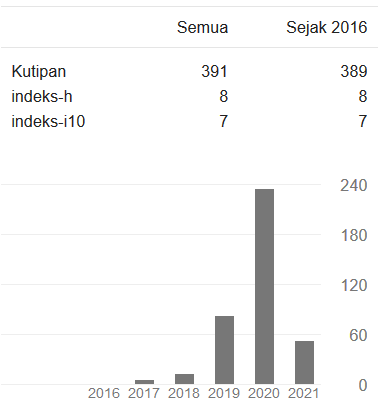Perancangan Enterprise Architecture Sistem Informasi Menggunakan Framework TOGAF ADM 9.2 PT. XYZ
DOI:
https://doi.org/10.32736/sisfokom.v10i1.1087Keywords:
IT Blueprint, Enterprise Architecture, TOGAF ADM 9.2Abstract
PT.XYZ is a gas oil manufacturing company, which produces offshore oil and gas drilling equipment. In supporting its business processes, this company uses a separate module application which causes data flow to be interrupted and results in the company experiencing delays in managing data and getting information on time. Based on the analysis of the problem, the researcher will design an integrated enterprise information system architecture for sales, finance, raw material procurement, production, project plan, and inventory. The method used is the TOGAF ADM 9.2 framework which consists of four phases, namely the vision architecture, business architecture, information system architecture, and technology architecture phases. This enterprise architecture design produces a blueprint as a guideline or framework in the development of information systems at PT. XYZ. The overall result of this research is to produce an enterprise architecture information system designReferences
Virna S, Wellia S, “Perancangan Enterprise Architecture Sistem Informasi dengan MenggunakanFramework TOGAF ADM pada CV. Garam Cemerlang”, Journal of Information System. vol. 4, no. 2, pp. 148-156, 2019, doi:10.33633/joins.v4i2.3054
Z Rifai, T Bratakusuma, R Arvianti, “Perencanaan Arsitektur Enterprise Desa Dengan Kerangka Kerja TOGAF ADM”, Jurnal Sisfokom. vol. 9, no. 2, pp.177-184, 2020, doi:10.32736/sisfokom.v9i2.803
M. Yaqin, Alfionita Sa’adah, Nanda Nafisah Puspithasari, Lutfia Miftahur Rahma, “Perancangan Arsitektur Sistem Informasi Pondok Pesantren Dengan The Open Group Architecture Framework(Togaf)”, Jurnal Riset Sistem Informasi dan Teknik Informatika. vol. 5, no. 1 ,2020, doi:10.30645/jurasik.v5i1.168
Erdenebold, Tumennast, “A Smart Government EA Framework for Mobile Application Services in Mongolia”, KAIST, 2016
A.Bakar, N.A., H., & Kama, “Assessment of Enterprise Architecture implementation Capability and Priority in Public Sector Agency”, 2016
Lapkin, A., P. Allega, B. Burke, B. Burton, R. S. Bittler, R. A. Handler, and R. Buchanan, “Gartner Clarifies the Definition of the Term Enterprise Architecture”, Gartner Research, 2008.
Sasmito, Ginanjar Wiro, “Annual Performance Planning Information System with Enterprise Architecture Modelling the Secretariat of the Central Java Province Parliament Used Framework Togaf”. International Journal of Social Science and Humanity, vol. 3(4), pp. 334-338, 2013, doi: 10.7763/IJSSH.2013.V3.257
Olsen, D. H. & Trelsgard, “An exploratory case study of the Norwegian higher education sector”, K. Enterprise Architecture adoption challenges, 2016
Setiawan, Awan, and Erwin Yulianto, “E-Government Interoperability and Integration Architecture Modeling Using TOGAF Framework Based On Service Oriented Architecture”, The Asian Journal of Technology Management vol. 11 no.1 : pp. 26–45, 2018, doi: 10.12695/ajtm.2018.11.1.3
Rouhani, Babak Darvish, Mohd Nazri Mahrin, Fatemeh Nikpay, and Pourya Nikfard, “A Comparison Enterprise Architecture Implementation Methodologies”. International Conference on Informatics and Creative Multimedia. pp. 1-6, 2013
Legowo N and Kaburuan E. R, “Enterprise Architecture Planning Information Sytem Based on Cloud Computing using TOGAF (Case Study: Pandi.id Registry)”. International Journal of Scientific and Technology Research, vol. 8 no. 9, pp. 1167-1177, 2019.
Mohamed Ali Mohamed, Galal Hassan Galal-Edeen, Hesham Ahmed Hassan, Ehab Ezzat Hasanien, “An Evaluation of Enterprise Architecture Frameworks for E-Government”, IEEE, 2012.
Wikata, E., Setiawan, N., & Mursityo, Y. “Perencanaan Sistem Penjualan Menggunakan TOGAF Architecture Development Method (TOGAF-ADM) Studi Pada PT. Millennium Pharmacon International Tbk Cabang Malang”. Jurnal Pengembangan Teknologi Informasi dan Ilmu Komputer, vol. 2, no. 9, pp. 2589-2598, 2018
Saluky, S, “ Development of Enterprise Architecture Model for Smart City”. ITEJ (InformationTechnology Engineering Journals), vol. 2 no. 2, pp. 12 – 18, 2017, doi: 10.24235/itej.v2i2.17
Nela R, Fitroh F, Asep Fajar Firmansyah, “Perancangan Arsitektur Enterprise Menggunakan TOGAF ADM Versi 9 (Studi Kasus: Bimbel Salemba Group)”. Studiainformatika: Jurnal Sistem Informasi, vol. 2, no. 1, 2017, doi: 10.15408/sijsi.v10i1.7743
A. Arum, Manuputty AD, “Perencanaan Arsitektur Enterprise Menggunakan Togaf Adm (Architecture Development Method ) Pada Dinas Kesehatan Kota Salatiga”, Open Access Journal Of Information System (OAJIS), Sesindo, 2018.
F. Gunawan, J. F. Andry, H. Tannady and R. Meylovsky, “Designing Enterprise Architecture Using TOGAF Framework in Meteorological, Climatological, and Geophysical Agency”, Journal of Theoretical and Applied Information Technology,vol. 97, no. 20, pp. 2376-2385, 2019
Downloads
Published
Issue
Section
License
The copyright of the article that accepted for publication shall be assigned to Jurnal Sisfokom (Sistem Informasi dan Komputer) and LPPM ISB Atma Luhur as the publisher of the journal. Copyright includes the right to reproduce and deliver the article in all form and media, including reprints, photographs, microfilms, and any other similar reproductions, as well as translations.
Jurnal Sisfokom (Sistem Informasi dan Komputer), LPPM ISB Atma Luhur, and the Editors make every effort to ensure that no wrong or misleading data, opinions or statements be published in the journal. In any way, the contents of the articles and advertisements published in Jurnal Sisfokom (Sistem Informasi dan Komputer) are the sole and exclusive responsibility of their respective authors.
Jurnal Sisfokom (Sistem Informasi dan Komputer) has full publishing rights to the published articles. Authors are allowed to distribute articles that have been published by sharing the link or DOI of the article. Authors are allowed to use their articles for legal purposes deemed necessary without the written permission of the journal with the initial publication notification from the Jurnal Sisfokom (Sistem Informasi dan Komputer).
The Copyright Transfer Form can be downloaded [Copyright Transfer Form Jurnal Sisfokom (Sistem Informasi dan Komputer).
This agreement is to be signed by at least one of the authors who have obtained the assent of the co-author(s). After submission of this agreement signed by the corresponding author, changes of authorship or in the order of the authors listed will not be accepted. The copyright form should be signed originally, and send it to the Editorial in the form of scanned document to sisfokom@atmaluhur.ac.id.






